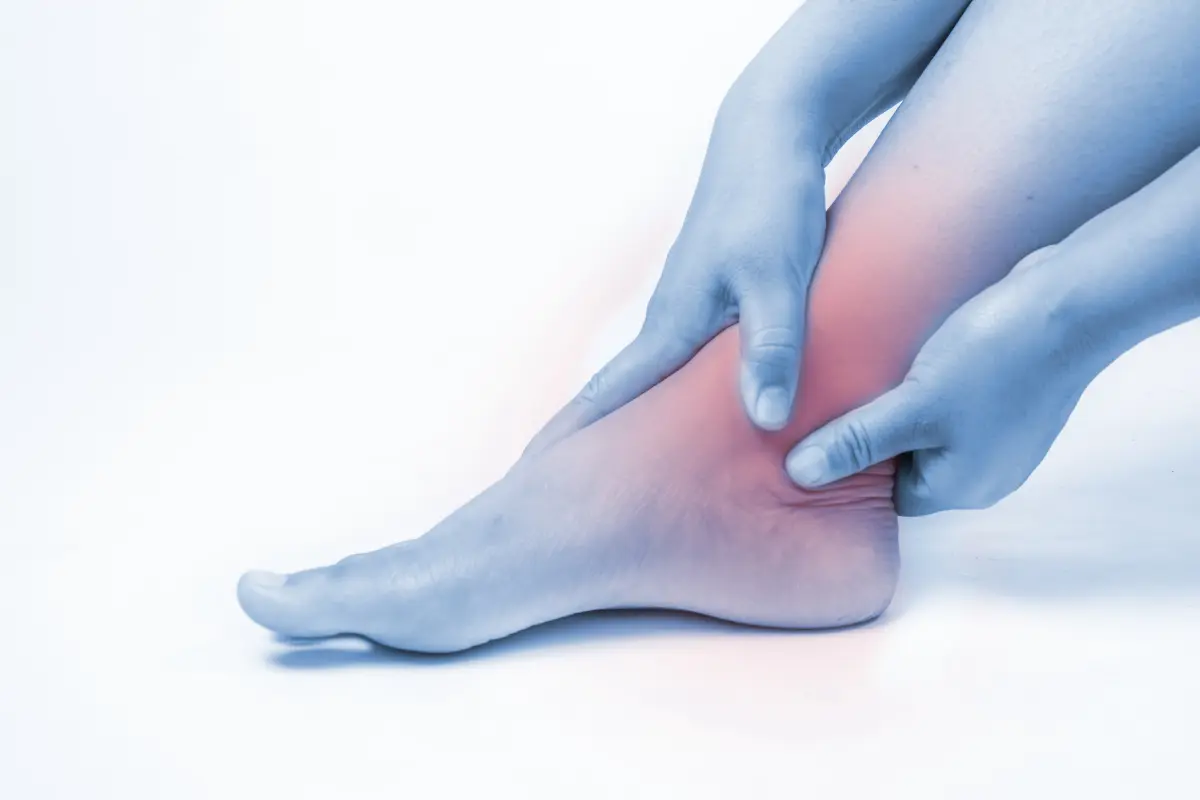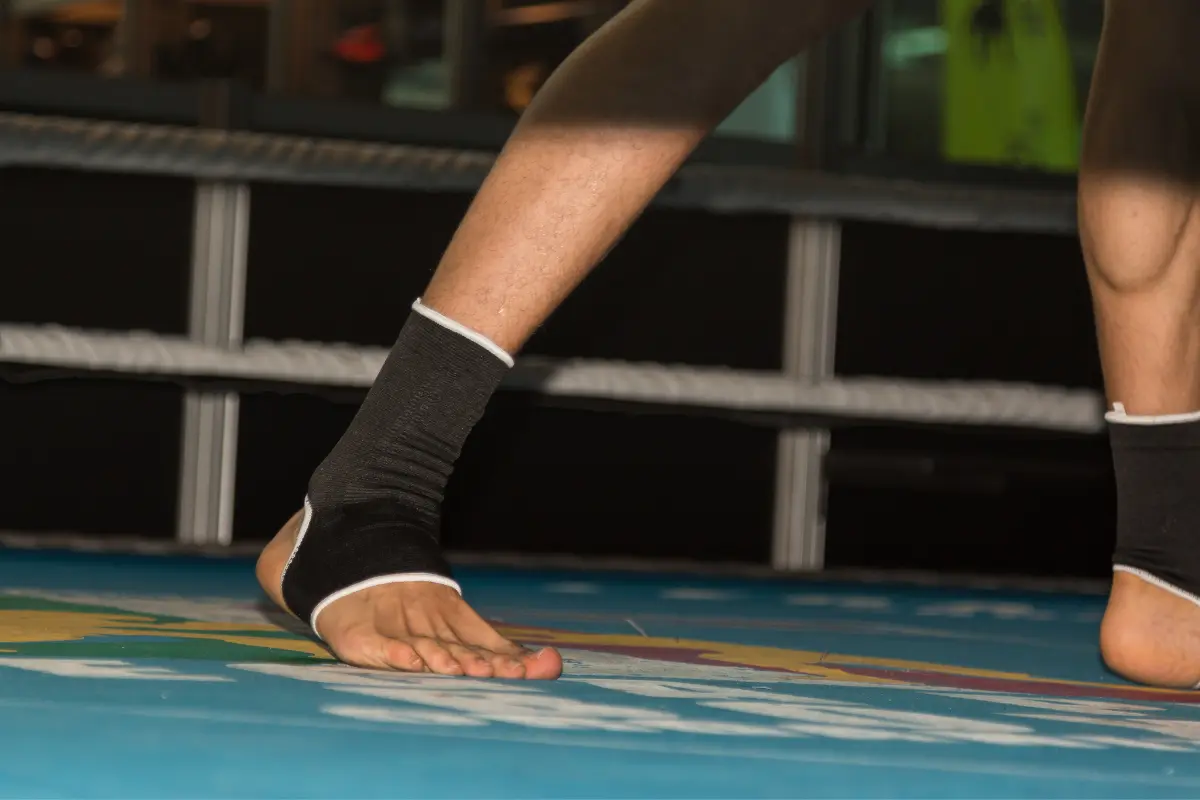Find Relief from Sinus Tarsi Syndrome: A Guide to Symptoms, Causes, and Recovery

Struggling with ankle pain and instability? Sinus tarsi syndrome, a condition stemming from ligament strain or injuries in the ankle, could be the reason. This focused guide cuts through the complexity to highlight symptoms, pinpoint causes, and map out treatment options for those seeking understanding and relief from this debilitating syndrome.
Exploring the Sinus Tarsi: A Key to Ankle Stability

Nestled between the talus and calcaneus bones, the sinus tarsi serves as a critical component for ankle stability. It’s no ordinary space; it’s a house for various structures pivotal for maintaining the all-important balance of the foot and ankle. This includes intrinsic ligaments such as the interosseous, cervical, and talocalcaneal ligaments, which are the guardians of subtalar joint stability.
But that’s not all. The health and function of the foot’s movements and stabilizing mechanisms are linked to the sinus tarsi’s:
- Vascular supply from the tarsi and tarsal canal arteries
- Attachment to the extensor digitorum brevis muscle
- Coverage by the inferior extensor retinaculum
These factors further support its structural importance.
Consequently, any harm to this crucial area can result in severe repercussions. An acute ankle injury, such as an ankle sprain, or chronic foot condition that affects the sinus tarsi can disrupt this delicate balance, causing:
- ankle instability
- pain and swelling in the ankle
- difficulty walking or bearing weight on the affected foot
- a feeling of instability or giving way in the ankle
Experiencing these symptoms may lead you to diagnose sinus tarsi syndrome.
Unraveling the Mysteries of Sinus Tarsi Syndrome

Characterized by ankle pain and instability, sinus tarsi syndrome often results from ligamentous injuries or chronic foot conditions. It’s a silent disruptor, often going unnoticed until it starts to impact daily activities. The key contributors to this syndrome are the interosseous and cervical ligaments within the sinus tarsi. An injury to these ligaments can lead to instability in the subtalar joint, a common feature of sinus tarsi syndrome.
Do you have flat feet or pronated feet? If yes, then you might be at a higher risk. Chronic foot conditions like these can exacerbate pressure on the subtalar joint, leading to inflammation and compression injuries that can progress to sinus tarsi syndrome.
Pain at the lateral ankle, especially during weight-bearing activities, is a distinguishing feature of sinus tarsi syndrome. This pain is influenced by the affected foot’s impaired nociception and proprioception. So, if you’ve been experiencing persistent ankle pain that’s affecting your mobility, it might be time to explore the possibility of sinus tarsi syndrome.
Identifying the Signs: Do You Have Sinus Tarsi Syndrome?
Given their subtlety, sinus tarsi syndrome symptoms are often overlooked. However, recognizing these symptoms early can go a long way in managing the condition. The common symptoms of sinus tarsi syndrome include:
- Localized ankle discomfort and tenderness
- A feeling of ankle instability
- Difficulty with activities like walking on uneven ground or performing specific athletic maneuvers
The pain associated with sinus tarsi syndrome is often described as deep and localized to the sinus tarsi space. You might also experience pain over the outside of the back of the foot and swelling that could be mistaken for a cyst or tumor. If you notice such symptoms, it’s best to consult a healthcare professional for an accurate diagnosis.
The sinus tarsi plays a crucial role in proprioception and pain, thanks to the adipose tissue within it that contains mechanoreceptors and free nerve endings. These structures provide feedback regarding foot and ankle movements, and any disruption to their functioning can lead to the symptoms of sinus tarsi syndrome.
The Diagnostic Journey: Confirming Sinus Tarsi Syndrome

The process of diagnosing sinus tarsi syndrome is detailed and careful. It begins with a thorough history taking, where patients typically describe a history of traumatic ankle injury often involving supination or inversion.
This is followed by a physical examination, where the healthcare professional checks for pain over the sinus tarsi and observes feelings of instability with pronation and supination movements.
For a more detailed evaluation, imaging studies are conducted. The preferred modality is the MRI, as it provides a detailed visualization of the structures within the sinus tarsi, such as the interosseous and cervical ligaments.
Other imaging techniques like radiographs, specifically Broden stress views, may be utilized to assess the stability of the subtalar joint, while stress fluoroscopy can visualize the joint’s motions in real-time.
Finally, the diagnosis of sinus tarsi syndrome is often confirmed by the cessation of symptoms following an injection of lidocaine into the sinus tarsi, which provides temporary relief. This multi-step process ensures an accurate diagnosis, paving the way for effective treatment strategies.
First-line Treatment Options for Sinus Tarsi Syndrome
Prior to considering surgery, conservative treatment strategies are primarily employed to treat sinus tarsi syndrome. These include physical therapy, muscle-strengthening exercises, and the use of orthotic devices to improve joint stability.
We’ll now examine these strategies in more detail.
Physical Therapy Protocols
Physical therapy holds a significant role in managing sinus tarsi syndrome. The focus is on enhancing stability, mobility, and strength in the affected ankle. This is achieved through a combination of techniques, including:
- Interferential Current Therapy (IFC)
- Active Release Technique (ART)
- Instrument-Assisted Soft Tissue Therapy
- Shockwave therapy
All are aimed at enhancing ankle joint mobility and breaking down scar tissue, as discussed in the j foot ankle surg research.
Balance exercises like standing on one leg enhance both stability and proprioception, crucial for managing sinus tarsi syndrome. Other exercises like Ankle Alphabet exercises, where the patient traces the alphabet with their toes, enhance ankle mobility and range of motion.
A key part of physical therapy is muscle-strengthening exercises. Exercises such as calf raises and toe curls target the lower leg and foot muscles, aiding in the strengthening necessary for the treatment of sinus tarsi syndrome. These exercises not only alleviate symptoms but also help prevent future instances of the syndrome.
Orthotics and Supportive Footwear

For those battling sinus tarsi syndrome, orthotics and supportive footwear can make a significant difference. Custom orthotic devices help correct pronation and supination movements, alleviating sinus tarsi pain and improving stability. This simple intervention can provide significant relief, making daily activities more comfortable.
When choosing footwear, it’s best to opt for shoes with a straight last, firm heel counter, and rigid material through the midsole. These features help maintain arch and foot stability, reducing the strain on the sinus tarsi.
But what if you can’t wear standard supportive footwear due to occupational constraints? The good news is, custom orthotic options are available to provide necessary foot support, ensuring that your feet are well taken care of, no matter your occupation.

Maintaining proper footwear can play a significant role in managing sinus tarsi syndrome. Opt for shoes with good arch support and cushioning to alleviate pressure on the affected area. Additionally, consider using orthotic inserts or shoe modifications recommended by your podiatrist to provide further support and stability. By wearing supportive footwear consistently, you can help reduce symptoms and improve comfort while undergoing treatment for sinus tarsi syndrome.
When Conservative Treatments Fail: Advanced Interventions
When conservative treatments fall short of providing adequate relief, it’s time to consider advanced interventions. One such option is ultrasound-guided corticosteroid injections, which can provide temporary relief and act as a bridge to more long-term rehabilitation for persistent sinus tarsi syndrome caused by synovitis.
If injections and conservative treatments fail, surgical options are available. These include keyhole surgery to remove scar tissue, flatfoot surgery for conditions related to flat feet, and subtalar fusion for subtalar arthritis. These advanced treatments offer hope for patients struggling with severe sinus tarsi syndrome.
However, it’s important to remember that surgical intervention is not without risks. Possible complications include infection, surgery failure, and the possibility of persistent pain post-operation. Therefore, it’s crucial to explore all treatment options and discuss the potential risks and benefits with your healthcare provider before deciding on surgery.
Rehabilitation and Recovery: Post-Treatment Care
The journey towards recovery from sinus tarsi syndrome necessitates diligent post-treatment care. For some surgical interventions, such as subtalar fusion, patients may need to wear a walking boot for 8-12 weeks to protect the joint and facilitate the healing process.
Post-treatment rehabilitation heavily relies on physical therapy. It involves exercises aimed at restoring strength, flexibility, and proper function to the foot and ankle surgery. A physical therapist guides this process, ensuring the exercises are performed correctly and safely.
Adherence to post-surgical care instructions provided by both the surgeon and physical therapist is essential to avoid complications that may lead to prolonged recovery times or further injury. Patients must also carefully follow a strategy for the gradual reintroduction of activities, as advised by healthcare professionals, to ensure proper healing and prevent the recurrence of sinus tarsi syndrome.
Preventing Future Flare-Ups: Long-term Management Strategies
The management of sinus tarsi syndrome extends beyond treatment, with long-term strategies being key to preventing future flare-ups. One such strategy is maintaining a consistent exercise regimen that strengthens the foot and ankle. Regular exercise not only keeps the muscles strong but also improves joint stability, reducing the chances of recurrence.
Regular examination of foot and ankle alignment can also help in averting future instances of sinus tarsi syndrome. Detecting signs of excessive medial shift or internal rotation early can prevent the development of sinus tarsi syndrome.
Steering clear of repetitive activities on uneven terrains can also mitigate the risk of sinus tarsi syndrome symptoms. So, whether you’re an athlete or someone who loves outdoor activities, being mindful of the surfaces you’re on can protect your ankles from undue strain.
Summary
Sinus tarsi syndrome is a condition that can significantly impact the quality of life, but with the right knowledge and proactive management, it can be effectively treated and prevented.
Understanding the importance of sinus tarsi in maintaining ankle stability, recognizing the symptoms of sinus tarsi syndrome, and being aware of the various treatment options are key steps toward managing this condition.
So, whether you’re diagnosed with sinus tarsi syndrome or aiming to prevent it, remember: your feet carry you through life’s journey, and you deserve the best care possible.
Common Questions
How do you fix sinus tarsi syndrome?
To fix sinus tarsi syndrome, you may need treatment such as anti-inflammatories, stable shoes, period of immobilization, ankle sleeves, and over-the-counter orthoses. In some cases, oral steroids, steroid injections, physical therapy, or custom orthoses may be necessary.
What does subtalar joint pain feel like?
Subtalar joint pain can feel sharp and stabbing, but is often achy and deep. The pain tends to worsen throughout the day with weight-bearing activities.
Is sinus tarsi syndrome rare?
Yes, sinus tarsi syndrome is relatively rare, characterized by pain and instability in the foot's tarsal sinus region.
How do you relieve talus pain?
To relieve talus pain, apply a well-padded splint around the back of the foot and leg, and elevate the foot above the level of the heart to minimize swelling and pain.
What is the sinus tarsi?
The sinus tarsi is a tunnel-like space between the talus and calcaneus bones, housing structures important for ankle stability.
The information on our website is intended for general informational and educational purposes only and should not be used as a substitute for professional medical advice. For any health-related concerns, we strongly recommend consulting with a healthcare professional. Please note that any reliance on the information found on our site is solely at your own risk. For more details, please see our Medical Disclaimer.
From the initial consultation to the final step of recovery, our podiatry teams ensure faster and more efficient healing with advanced treatment methods and personalized care.
About Our Practice









